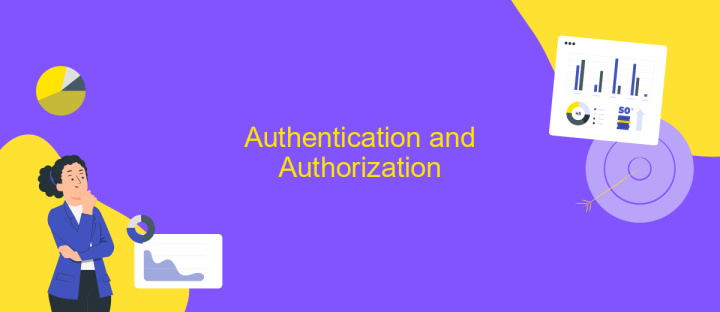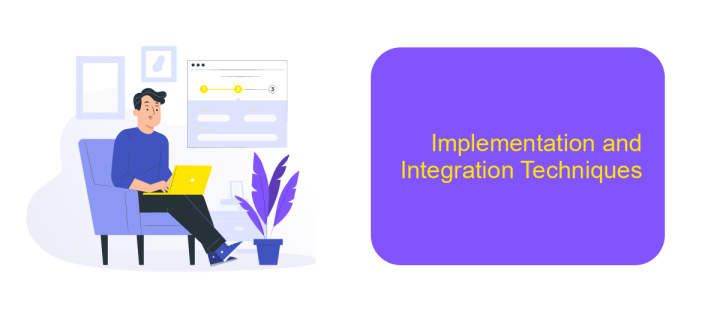3rd Party API Integration
Integrating third-party APIs has become a cornerstone for modern software development, enabling businesses to enhance functionality, improve user experience, and accelerate innovation. By leveraging external services, developers can seamlessly incorporate features such as payment processing, data analytics, and social media interactions into their applications. This article explores the benefits, challenges, and best practices for successful third-party API integration, providing valuable insights for developers and decision-makers alike.
Introduction to 3rd Party APIs and Their Benefits
Third-party APIs, or Application Programming Interfaces, are essential tools for modern software development. They allow developers to integrate external services and functionalities into their applications seamlessly, enhancing user experience and expanding capabilities without the need for building everything from scratch. These APIs act as bridges between different software systems, enabling them to communicate and work together efficiently.
- Cost Efficiency: Reduces the need for developing new functionalities internally, saving time and resources.
- Faster Development: Accelerates the development process by providing ready-made solutions and functionalities.
- Scalability: Allows applications to scale by integrating robust and tested services from established providers.
- Improved User Experience: Offers users a more comprehensive and seamless experience by incorporating diverse features.
- Access to Expertise: Leverages the expertise of API providers, ensuring high-quality and reliable services.
Integrating third-party APIs is a strategic decision that can significantly enhance the functionality and reach of an application. By leveraging these external services, developers can focus on core competencies while still delivering a feature-rich product. As the digital landscape evolves, the role of third-party APIs becomes increasingly pivotal in fostering innovation and efficiency in software development.
Choosing the Right API for Your Needs

When selecting the right API for your needs, it's crucial to first understand your specific requirements. Begin by identifying the core functionalities your project demands and ensure the API supports these features. Consider factors such as ease of integration, documentation quality, and community support. An API with comprehensive documentation and active community forums can significantly streamline the integration process and troubleshooting. Additionally, evaluating the API's scalability and reliability is essential, especially if your project is expected to grow or requires high uptime.
Furthermore, consider leveraging tools like ApiX-Drive to simplify and automate your API integration process. ApiX-Drive offers a user-friendly interface that connects various services without requiring extensive coding knowledge, making it easier to manage and monitor integrations. By using such a service, you can focus more on your core business operations while ensuring seamless data flow between applications. Always test the API thoroughly in a sandbox environment before full deployment to ensure it meets all your operational needs and expectations.
Authentication and Authorization

When integrating third-party APIs, ensuring secure authentication and authorization is crucial. Authentication verifies the identity of the user or application, while authorization determines what resources they can access. Implementing robust security measures protects sensitive data and prevents unauthorized access. Common authentication methods include API keys, OAuth, and JWT (JSON Web Tokens), each offering different levels of security and convenience.
- API Keys: Simple to implement, API keys are unique identifiers passed with requests. However, they offer limited security as they can be easily exposed.
- OAuth: A more secure method, OAuth allows users to grant limited access to their resources without sharing credentials. It is widely used for social media integrations.
- JWT: JSON Web Tokens are compact, URL-safe tokens used for claims between parties. They are self-contained and secure, making them ideal for stateless authentication.
Choosing the right authentication method depends on the API's security requirements and use case. For sensitive applications, combining multiple methods, such as OAuth with JWT, can enhance security. Regularly updating security protocols and monitoring access logs are essential practices to maintain the integrity of API integrations.
Implementation and Integration Techniques

Integrating third-party APIs into your application requires careful planning and execution to ensure seamless functionality. Initially, it is essential to thoroughly review the API documentation provided by the service provider. This documentation typically includes detailed information about available endpoints, authentication methods, and data formats, which are crucial for successful integration.
Once you have a comprehensive understanding of the API, the next step is to set up a development environment. This involves configuring your application to handle API requests and responses, often using libraries or SDKs provided by the API vendor. Testing in a sandbox environment is also recommended to avoid unintended impacts on production data.
- Ensure proper authentication and authorization mechanisms are in place.
- Implement error handling to manage and log API errors effectively.
- Utilize caching strategies to optimize API call efficiency.
- Monitor API usage to stay within rate limits and avoid service disruptions.
Finally, after successful testing, deploy the integration into your live environment. Continuous monitoring and maintenance are necessary to adapt to any API updates or changes, ensuring ongoing compatibility and performance. Regularly revisiting the integration can help in optimizing and scaling the application as needed.
- Automate the work of an online store or landing
- Empower through integration
- Don't spend money on programmers and integrators
- Save time by automating routine tasks
Testing, Debugging, and Maintenance
Testing a 3rd party API integration is crucial to ensure seamless functionality and performance. Begin by creating a comprehensive test plan that includes unit tests, integration tests, and end-to-end tests. Utilize tools like Postman or SoapUI to simulate API requests and responses, verifying that the integration behaves as expected under various scenarios. Incorporate automated testing frameworks to streamline the process and catch potential issues early. Regularly update your test cases to align with any API changes or updates from the provider, ensuring continuous compatibility and reliability.
Debugging and maintenance are ongoing processes that keep your integration running smoothly. When issues arise, use logging and monitoring tools to identify and diagnose problems quickly. ApiX-Drive can be an invaluable resource, offering user-friendly interfaces and real-time monitoring to simplify troubleshooting. Schedule routine maintenance checks to update dependencies and optimize performance. Stay informed about any changes or deprecations in the 3rd party API by subscribing to provider updates. This proactive approach minimizes downtime and ensures your integration remains efficient and effective over time.
FAQ
What is a 3rd Party API Integration?
Why should I use 3rd Party API Integrations?
How do I ensure the security of my data when using 3rd Party APIs?
What are the common challenges in 3rd Party API Integration?
Can I automate 3rd Party API Integrations without extensive coding knowledge?
Apix-Drive is a simple and efficient system connector that will help you automate routine tasks and optimize business processes. You can save time and money, direct these resources to more important purposes. Test ApiX-Drive and make sure that this tool will relieve your employees and after 5 minutes of settings your business will start working faster.


